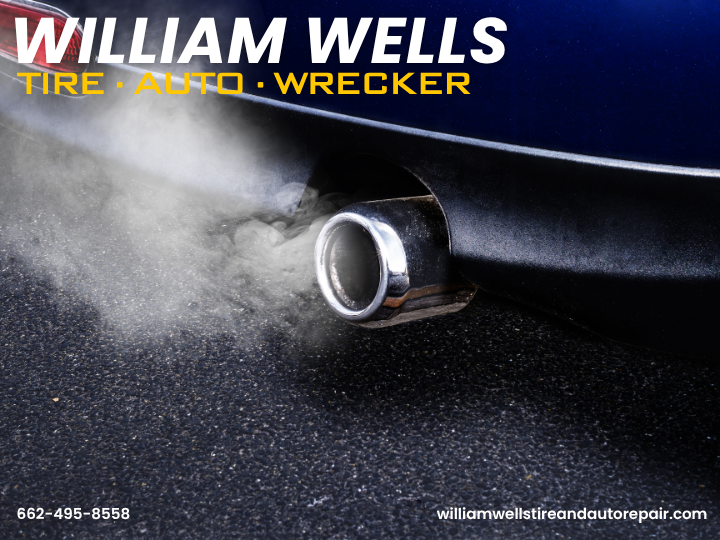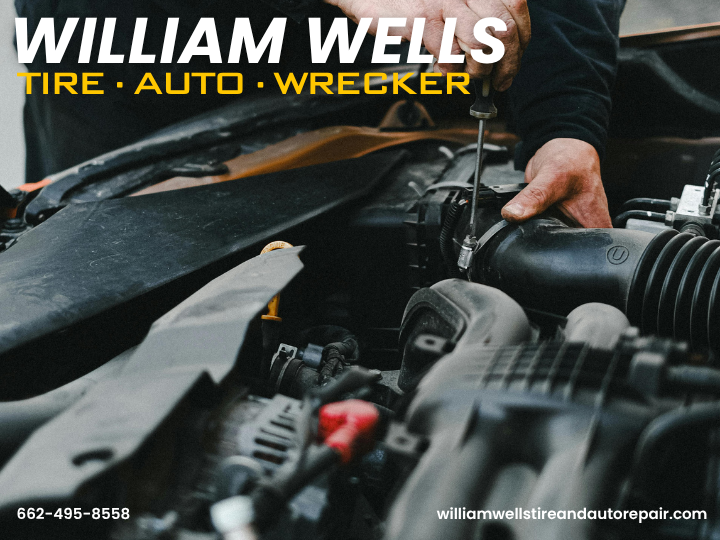Why is my truck overheating with a new thermostat?

Why Is My Truck Still Overheating After Replacing the Thermostat?
At William Wells Tire & Auto, We Don’t Just Fix What’s Obvious — We Fix What’s Actually Wrong
So you replaced the thermostat. Maybe even flushed the coolant and swapped out a hose or two. But your truck is still overheating. Now what?
At William Wells Tire & Auto, with locations in Starkville, Columbus, and West Point, we hear this story almost daily. A thermostat replacement seems like the right call — but the issue persists. That’s because a thermostat is only one small piece of a much bigger system.
If your truck is still running hot, odds are there’s a deeper problem. And without the right diagnostics, you’re just throwing parts at symptoms. Let’s break down why trucks overheat even after the thermostat has been replaced — and how our team uncovers and fixes the real issue the first time.
1. Air Trapped in the Cooling System
After replacing the thermostat, the cooling system needs to be properly bled. If it isn’t, air pockets can block coolant flow, causing false overheating and erratic temperature spikes.
Signs include:
- Heater blowing cold air
- Gurgling or bubbling sounds
- Coolant level keeps fluctuating
Our Fix:
We use professional
vacuum-fill and pressure-bleed tools to eliminate all air and restore complete circulation. No shortcuts.
2. Radiator Blockage or Restricted Flow
If your radiator is partially clogged with rust or sediment, coolant won’t circulate properly — especially when idling or towing. A new thermostat won’t matter if the coolant can’t move through the system.
Symptoms:
- Overheating in stop-and-go traffic
- Coolant appears discolored or sludgy
- Cold lower radiator hose
Our Fix:
We run
flow testing and infrared thermal diagnostics to verify radiator performance under actual operating conditions — not just surface checks.
3. Water Pump Isn’t Circulating
Just because your water pump isn’t leaking doesn’t mean it’s working. A worn or broken impeller may spin, but it won’t push coolant through the system. This is common in high-mileage trucks.
Clues:
- Overheating at highway speeds
- No visible movement in the radiator
- Reservoir boiling over under load
Our Fix:
We test for
proper flow and pressure at operating temperature, not just whether the pulley turns. If circulation is low, we find the cause fast.
4. Blown Head Gasket or Combustion Gas in the Coolant
A failing head gasket can allow engine combustion gases to enter the cooling system — superheating the coolant, creating pressure spikes, and introducing air that never goes away.
Signs to look for:
- Bubbles in the radiator or reservoir
- White smoke from the tailpipe
- Coolant level dropping with no external leaks
- Sweet smell from the exhaust
Our Fix:
We perform a
block test, chemical gas analysis, and cylinder pressure checks to confirm whether combustion gases are entering the cooling system.
5. Weak Radiator Cap or Overflow Malfunction
The radiator cap regulates pressure. If it’s weak or failing, your coolant will boil earlier than normal — and air or steam will enter the system, causing overheating even if everything else is perfect.
Symptoms:
- Coolant overflowing from reservoir
- Collapsed hoses
- Hissing or steaming at idle
Our Fix:
We test cap pressure and inspect the full
overflow return circuit, including hoses, clamps, and valves.
6. Cooling Fan Not Working
Whether electric or mechanical, your fan has one job — to keep air flowing through the radiator when the truck isn’t moving fast enough. If it’s not coming on at the right time or not moving enough air, you’ll overheat every time you idle.
Signs:
- Overheats at stoplights
- A/C stops cooling at idle
- Fan doesn’t engage when hot
Our Fix:
We test all
fan relays, motors, clutch assemblies, and temperature sensors to ensure your fan system works exactly when it should.
7. Wrong Thermostat or Improper Installation
We see this more often than you’d think. Low-quality thermostats that fail brand new. Units installed backward. Wrong temperature ratings. All of them lead to overheating even though the part is technically “new.”
Indicators:
- Temp gauge spikes right after install
- Upper radiator hose stays cold
- Inconsistent cabin heat or engine temp
Our Fix:
We install only
OEM-spec thermostats, verify orientation, and run a full warm-up test with thermal imaging to ensure everything is working perfectly.
The William Wells Way: Diagnostics First. Repair Second.
At William Wells Tire & Auto, we don't guess. We diagnose — using industry-grade tools, live testing, and real-time verification. Our team serves truck owners throughout Starkville, Columbus, and West Point who are tired of wasting time and money on misdiagnosed overheating issues.
Whether you're commuting, hauling, or running a work truck, we’ll protect your engine from the damage overheating can cause — and get the job done right the first time.
What to Do Next
If your truck is still overheating after a thermostat replacement, it’s time for a full cooling system evaluation. We’ll test:
✅ Coolant flow and radiator performance
✅ Water pump circulation under pressure
✅ Cooling fan operation and controls
✅ Radiator cap and overflow function
✅ Air pocket removal (vacuum bleed)
✅ Block test for head gasket leaks
📍
Starkville: 12919 MS-182 — (662) 268-4081
📍
Columbus: 1625 Gardner Blvd — (662) 240-2414
📍
West Point: 93 W Broad St — (662) 495-8558
🌐 https://www.williamwellstireandautorepair.com
Summary Table: Why Your Truck Overheats Even After a New Thermostat
Cause
Problem It Causes
William Wells Solution
Air in System
Blocks coolant flow
Vacuum-fill and pressure bleed
Radiator Blockage
Poor heat dissipation
Flow and temp drop testing
Water Pump Failure
Weak circulation under load
Impeller and pressure diagnostics
Head Gasket Leak
Superheated coolant and pressure spikes
Block test and combustion gas analysis
Bad Radiator Cap
Early boiling and pressure loss
Pressure test and overflow inspection
Fan Not Working
Overheats at idle or slow speeds
Relay, fan motor, sensor diagnostics
Wrong Thermostat
No flow or temp mismanagement
OE-spec install with full-cycle verification
William Wells Tire & Auto — Fixing the Cause, Not the Symptom
Overheating doesn’t just cost you time — it threatens your engine, your schedule, and your peace of mind. Let our team at William Wells get your cooling system dialed in and keep your truck running strong.
For more information you can watch the video.










